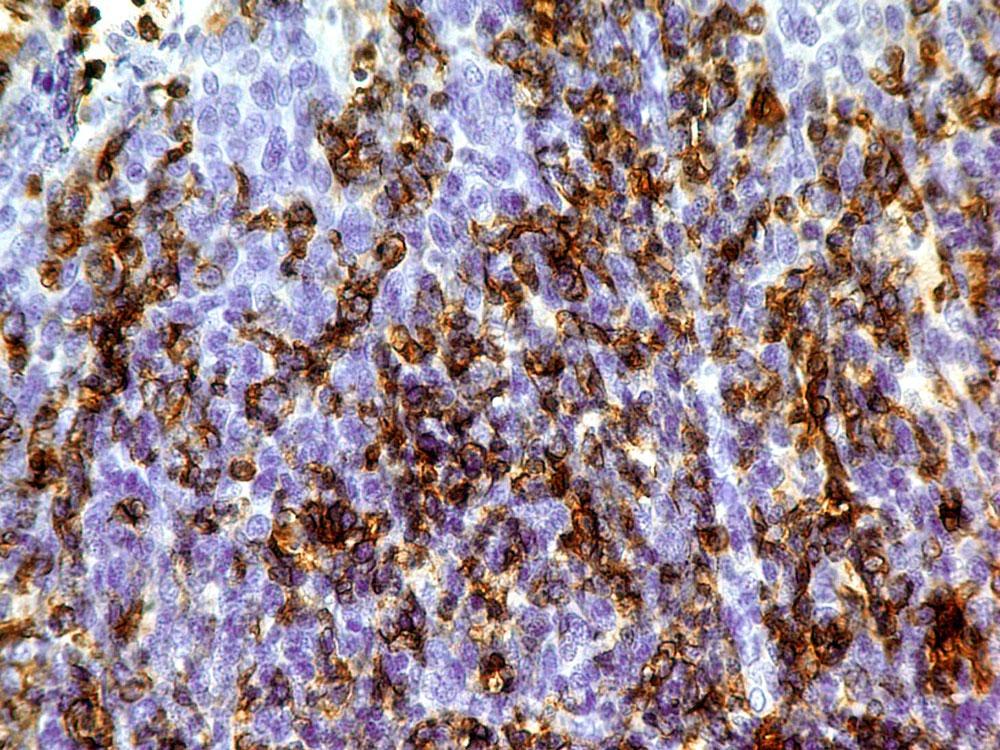Monoclonal Antibody to CD3e (ABM45B3)

Fig-1: Immunohistochemical analysis of CD3e in human Tonsil tissue using CD3e antibody (Clone: ABM45B3) at 5 µg/ml.
Roll over image to zoom in
Shipping Info:
Order now and get it on Tuesday April 29, 2025
Same day delivery FREE on San Diego area orders placed by 1.00 PM
| Format : | Purified |
| Amount : | 100 µg |
| Isotype : | Mouse IgG2b Kappa |
| Purification : | Protein G Chromatography |
| Content : | 25 µg in 50 µl/100 µg in 200 µl PBS containing 0.05% BSA and 0.05% sodium azide. Sodium azide is highly toxic. |
| Storage condition : | Store the antibody at 4°C; stable for 6 months. For long-term storage; store at -20°C. Avoid repeated freeze and thaw cycles. |
CD3e (CD3-epsilon), together with CD3-gamma, -delta and -zeta, and the T-cell receptor alpha/beta and gamma/delta heterodimers, forms the T-cell receptor-CD3 complex. This complex plays an important role in coupling antigen recognition to several intracellular signal-transduction pathways. The gene for CD3e have been mapped to band q23 of chromosome 11 in humans and consisted of nine exons. Three exons, encoding the junction of leader peptide and mature protein, are extremely small. The CD3e cytoplasmic tail, highly conserved, can be tentatively subdivided into three regions; the N-terminal region contains a basic amino acid cluster, the central region contains a proline-rich sequence, and the C-terminal region contains the ITAM . Among the CD3 subunits, CD3e is the most likely candidate for performing a critical role in the TCR signaling response. CD3e is represented twice in the TCR complex, serving as a component of both the gamma/epsilon and delta/epsilon dimers. In addition, after TCR cross-linking, CD3e and zeta are the predominant tyrosine-phosphorylated TCR subunits.
Western blot analysis: 0.5-1 µg/ml;
Immunohistochemical analysis: 5-10 µg/ml
For Research Use Only. Not for use in diagnostic/therapeutics procedures.
| Subcellular location: | Cell membrane |
| Post transnational modification: | Phosphorylated on Tyr residues after T-cell receptor triggering by LCK in association with CD4/CD8. |
| BioGrid: | 107354. 25 interactions. |
|
There are currently no product reviews
|
















.png)











